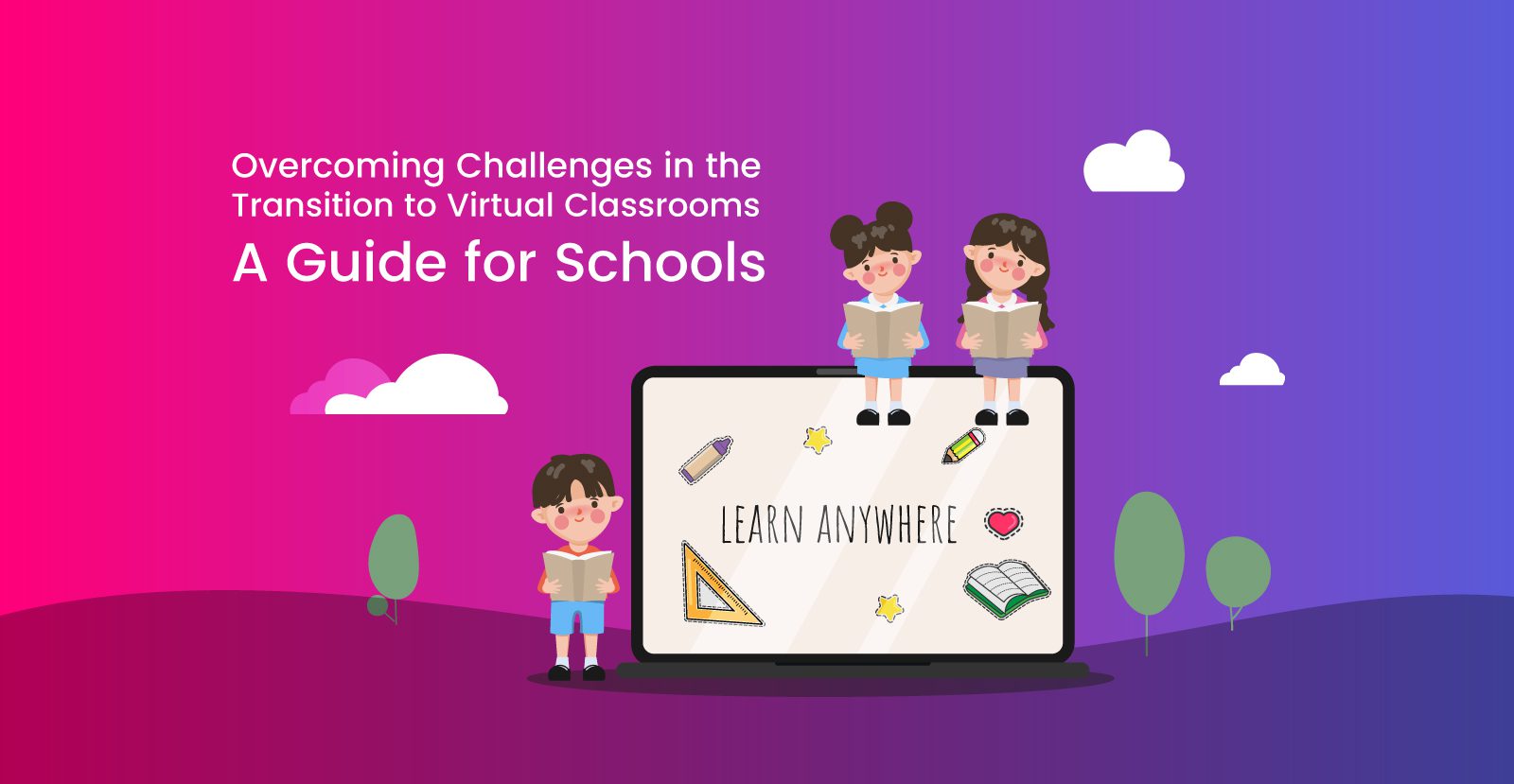The shift to virtual classrooms has been one of the most significant transformations in the educational landscape in recent years. While it presents an array of opportunities, it’s not without its challenges. Schools worldwide are grappling with this new reality, striving to ensure that the quality of education remains high. This guide aims to address these challenges and provide actionable strategies to make the transition to virtual classrooms as smooth as possible for educators, students, and parents alike.
Let us discuss the various challenges in the transition to virtual classrooms for schools and how to overcome them.
Understanding the Challenges
1. Technological Barriers: Not all students have access to the necessary technology – be it devices or internet connectivity. This disparity can lead to a digital divide, impacting students’ ability to participate in virtual learning.
2. Adapting Teaching Methods: Teachers are required to rethink their teaching methods. Traditional classroom techniques don’t always translate well to a digital format, necessitating new approaches to engage students.
3. Maintaining Student Engagement: Keeping students engaged in a virtual environment can be challenging. The lack of physical presence makes it harder to gauge their attention and participation levels.
4. Assessment and Feedback: Assessing student performance and providing timely feedback can be more complex in a virtual setting.
5. Mental Health and Well-being: The lack of social interaction and the potential for increased screen time pose risks to the mental health and well-being of both students and teachers.
Strategies for Overcoming These Challenges
1. Bridging the Technology Gap:
– Partner with local businesses or run fundraisers to provide devices and internet access to those in need.
– Create and distribute physical learning packets for students who cannot participate online.
2. Revamping Teaching Approaches:
– Invest in teacher training focused on digital tools and innovative online teaching methodologies.
– Encourage the use of interactive platforms and multimedia resources to make lessons more engaging.
3. Boosting Student Engagement:
– Incorporate interactive elements like quizzes, polls, and group discussions in the virtual classroom.
– Schedule regular check-ins and one-on-one sessions to maintain a personal connection with students.
4. Effective Assessment and Feedback:
– Utilize various online assessment tools to track student progress.
– Provide regular, constructive feedback through digital platforms.
5. Supporting Mental Health:
– Establish virtual counseling sessions and wellbeing workshops.
– Encourage regular breaks and physical activity to reduce screen fatigue.
Implementing Best Practices
As schools navigate the transition to virtual classrooms, implementing best practices is crucial for ensuring a seamless and effective learning experience. These practices not only aid in smoothing the transition but also help in maintaining the quality of education that students receive. Here’s how schools can approach this:
1. Continuous Professional Development for Teachers: The cornerstone of a successful virtual classroom is a well-trained teaching staff. Schools should invest in ongoing professional development programs to keep educators abreast of the latest digital teaching techniques and educational technologies. Workshops, webinars, and online courses can provide teachers with the skills needed to effectively deliver virtual lessons, manage online classrooms, and engage with students remotely. This continuous learning approach ensures that educators are not just coping, but thriving in the virtual environment.
2. Active Parental Involvement: The role of parents in virtual learning is more critical than ever. Schools should actively involve parents by providing them with the tools and knowledge to support their children’s learning journey at home. This can include virtual orientation sessions, resource kits, and regular communication channels to keep parents informed and engaged. By partnering with parents, schools can create a supportive home learning environment that complements the virtual classroom experience.
3. Robust Feedback Mechanisms: An effective feedback system is vital to monitor and enhance the virtual learning experience. Schools should establish channels where students, parents, and teachers can openly share their experiences, concerns, and suggestions. This could be through regular surveys, virtual suggestion boxes, or interactive forums. By valuing and acting upon the feedback received, schools can make continuous improvements to their virtual learning programs.
4. Fostering a Sense of Community: While virtual classrooms can sometimes feel isolating, schools can combat this by creating a sense of community. This can be achieved through virtual clubs, online events, and extracurricular activities. Such initiatives encourage interaction and collaboration among students, helping them to feel connected and engaged, despite the physical distance. Schools should strive to create an online environment where students feel a part of a vibrant and supportive community.
Conclusion
Transitioning to virtual classrooms is a journey filled with challenges, but
also with immense potential for growth and innovation. By embracing technology, adapting teaching methods, and prioritizing the well-being of students and staff, schools can not only overcome these challenges but also enhance the learning experience. It’s about creating a balanced, inclusive, and dynamic educational environment that resonates with the digital age.
The key lies in being flexible, patient, and open to learning and evolving. This transition is not just a short-term response to a global crisis but a stepping stone towards a more resilient and versatile education system. By working together – educators, students, and parents – we can harness the power of digital learning and pave the way for a brighter educational future.
Remember, the goal isn’t just to replicate the physical classroom online, but to create something even better: a learning experience that is accessible, engaging, and effective for every student.
Read our latest blog on AI in school curriculum videos



Please enter input field